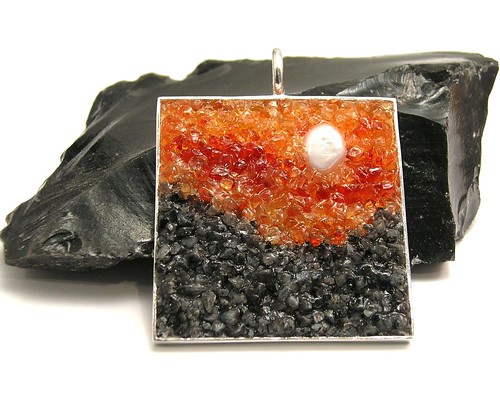This article is going to have a lot of images so I'm posting them scaled down, click to enlarge if you're having trouble reading them.
Determining Relevancy
Factors Etsy uses in determining relevancy according to their article on the subject.
Titles - In particular Etsy is weighting the words at the beginning of a title more than the words at the end. In particular the first 3 words are the most important.
Tags - Tags in this case also include the categories you pick when you list an item. I'm not positive on this but my own experiments seem to imply that those tags weight a little higher than the ones you type in. Keep in mind that Materials do not count as tags and are not factored into search (I tested this, using a material listed that I am not using as a tag and it did not show up in the search at all) so if the material is an important selling point of the item you must have it in the tags.
Recency - This is how newly listed or renewed your item is. In the past all of Etsy's searches defaulted to just the most recent, now it is just one factor in the search. This means you don't need to renew items all the time to be higher in the search but it's probably still a good idea to have items spread out in how recently they have been listed. If you previously renewed multiple items every day you can now just renew an item or two that are close to expiring. This of course is going to save you money in listing fees that you can better use on other advertising.
Attributes - These new options for recipient, occasion, and style. Etsy has stated that they will be used in search eventually but right now they do not factor into search (as proven by the fact that "unisex adult jewelry" has almost no results). So until these attributes are included in the search if they are an important selling point for your item they must be included in tags.
From my own experiments this is how I think the level of importance for relevancy goes:
- First 3 words of the title
- Categories (possibly the same or nearly the same weight as #1)
- Tags
- Remaining words in the title (possibly the same or nearly the same weight as #3)
- Recency
- First 3 words = 4 pts
- Category = 3pts
- Tags = 2pts
- Other title words = 1pts
(Category -> Necklace)+(First 3 words -> Octopus)+(Tag -> Octopus)+(Title words -> Necklace) = 4+3+2+1 = 10but if I searched "Octopus Pendant" I would instead have
(First 3 words -> Octopus)+(Tag -> Pendant)+(Tag -> Octopus) = 4+2+2 = 6.Thus I would expect that even though there are far fewer results for "Octopus Pendant" than "Octopus Necklace" that I would rank lower in the search results for "Octopus Pendant" (and I do, in fact when I just ran this search "Octopus Pendant" didn't return one of my items until page 16 while the same necklace was near the top of page 2 for "Octopus Necklace"). So where does recency play into this? I think Etsy uses recency to rank items that otherwise have "equal" scores with the newer one being higher ranked than the older one.
Improving your Relevancy
In many ways improving relevancy is the same as improving your onsite SEO (one of the reasons I've had to make very few changes in order to rank well in relevancy). Use good keywords that shoppers are going to think of in search, if you need a little help use a keyword tool like Google Keyword Tool. Also use the keyword tool to make sure the words and phrases you come up with are ones that people search for while still being closely related to what your product is.
Make sure you use all your tag spaces and select all 3 categories if you can. Don't waste any tag spaces. For example if your items colors have name variations (for example a deep purple could be tagged both "purple" and "plum") and you have a space to fill use the color variation. If you item has a number of different names for the style make for you use them (for example a woman's tank top could also be tagged with "camisole").
Write good descriptive titles with important words at the beginning. You don't have to sacrifice your cute item names either! For example if you are a baby clothing maker and you have a item currently called "Joshua" that is a blue corduroy jacket a title like this would have good relevancy: "Blue Baby Jacket "Joshua" in Soft Warm Corduroy for Age 16 Months". Now the title "Blue baby jacket corduroy 16 months" would be just as relevant for the keywords "blue", "baby", "jacket", "corduroy", and "16 months" but the first title has more consumer appeal. You have a 140 character limit for titles, that first title looks long but it's only 65 characters so don't be afraid to write longer descriptive titles if you need to.
Remember the "long tail" while a lot of people will search popular but general terms like "red dress" a person searching for "red polka dot retro dress" is more likely to be interested in and buy your item if it's a red polka dotted 40s inspired dress. This is why it's important to write descriptive titles and use all your tags, to make sure people using those long tail search terms find your items because they are more likely to buy.









